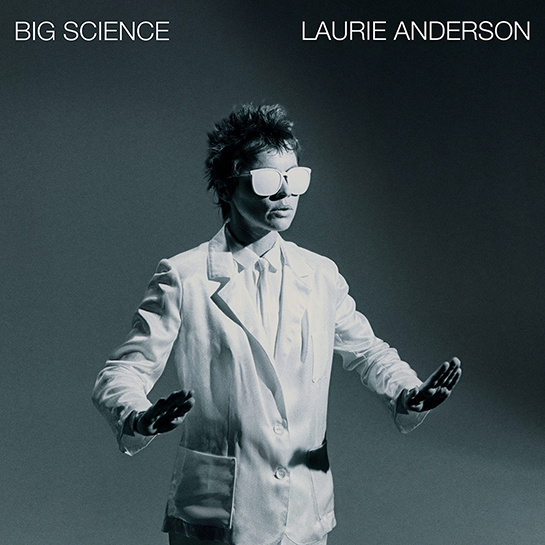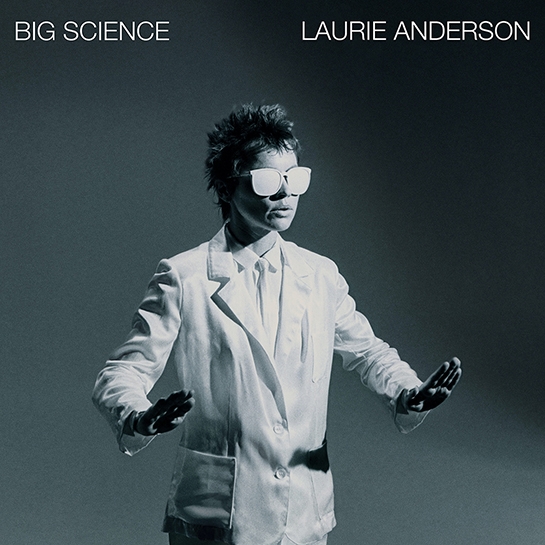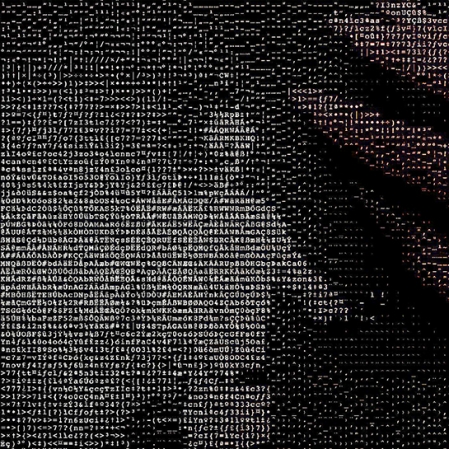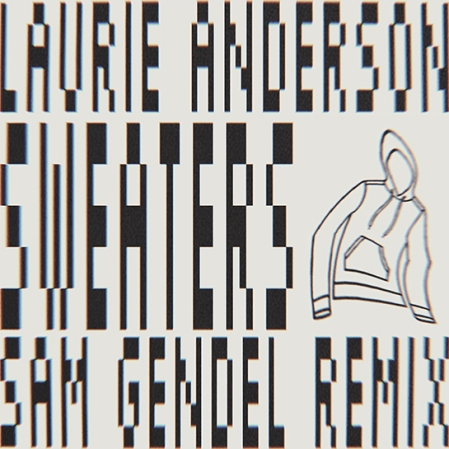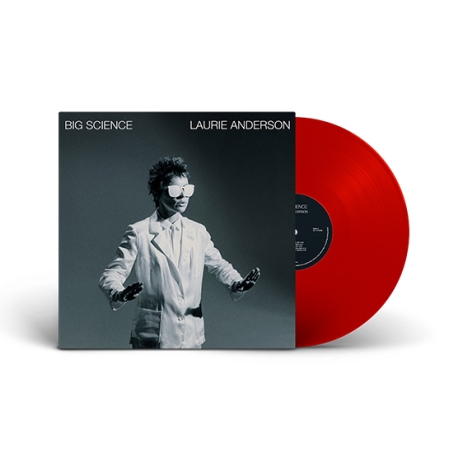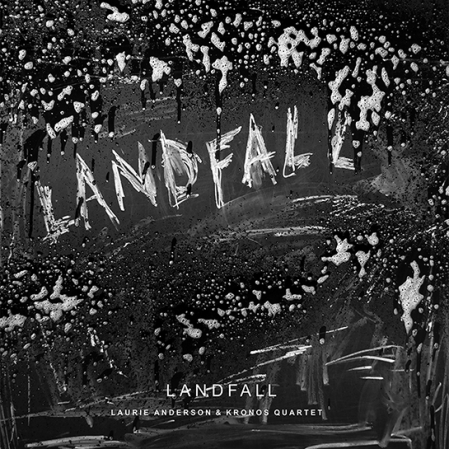Anderson’s debut, re-mastered and expanded in 2007 for its 25th anniversary, foresaw the future, mixing performance art, pop, and electronics, most hauntingly on “O Superman.” “Her work,” notes the New York Times, “is unlike anything else in music.”
“Laurie Anderson is the most compelling performer from New York City's bohemian art scene to land a recording contract since Patti Smith signed with Arista some six years ago. Big Science, Anderson's eerie aural collage of a debut album, communicates … her astonishing intensity.” —Stephen Holden, Rolling Stone (June 10, 1982)
Nonesuch Records released the re-mastered 25th anniversary edition of Laurie Anderson’s debut album Big Science on July 17, 2007. This newly expanded and enhanced edition of the album includes liner notes written by Anderson, the classic video for the surprise 1981 hit single “O Superman,” and the original B-side track “Walk the Dog”.
In the early 1980s Anderson was already respected as a conceptual artist and composer, adept at employing gear both high-tech and homemade in her often violin-based pieces, and she was a familiar figure in the cross-pollinating, Lower Manhattan music-visual art-performance circles from which Philip Glass and David Byrne also emerged.
While working on her now-legendary seven-hour performance art/theater piece United States, Part I–IV, which premiered over two nights at the Brooklyn Academy of Music (BAM) in 1983, she cut the spare “O Superman (For Massenet)”, an electronic-age update of nineteenth century French operatic composer Jules Massenet’s aria “O Souverain,” for the tiny New York City indie label 110 Records. In the UK, DJ John Peel picked up a copy of this very limited edition 33⅓ RPM 7” and spun the eight-minute-plus track on BBC Radio 1. The exposure resulted in an unlikely number two hit, lots of attention in the American press, and a worldwide deal with Warner Bros. Records.
At the time of its original release, the NME wrote of Big Science, "There’s a dream-like, subconscious quality about her songs which helps them work at deeper, secret levels of the psyche." With instrumentation ranging from tape loops to found sounds to bag pipes, Big Science anticipated the tech-savvy beats, anything-goes instrumentation and sample-based nature of much contemporary electronic and dance music.
Anderson was able to articulate in these songs, most of which were adapted from United States, the social/political anxiety she perceived in American society, as well as a longing for safety and emotional connection. The themes of Big Science include images of planes falling out of the sky (“From the Air”), the simultaneously comforting and sinister embrace of technology (“O Superman”), and the failure of men and women to speak in the same language (“The It Tango”).
PRODUCTION CREDITS
Produced by Laurie Anderson & Roma Baran
Assistant Producer: Perry Hoberman
Engineer: Leanne Ungar
Technical Consultant & Systems Design: Bob Bielecki
Recorded at The Lobby, New York, NY
Mixed at The Hit Factory, New York, NY
Assistant Engineer: Jon Smith
Additional tracks recorded at The Hit Factory with Bob Musso, assistant;
Skyline Studios with Arthur Payson, assistant; Sorcerer Sound with Al Fierstein, assistant
Tracks 6, 11: Roma Baran, engineer; mixed at The Lobby
Additional engineering for reissue: Vivian Stoll
Remastered by Greg Calbi at Sterling Sound, New York, NY
All words and music by Laurie Anderson © 1982 Laurie Anderson, Difficult Music (BMI)
“O Superman” video:
Director: Josh White
Art Director: Perry Hoberman
Concept: Laurie Anderson
Music Director: Roma Baran
Sign Language Coach: Jane Comfort
Original Art Direction: Perry Hoberman
Original Design: Cindy Brown
Reissue Design: Barbara deWilde
Front cover photo: Greg Shifrin
130428
MUSICIANS
Laurie Anderson, vocals (1-11), vocoder (1, 6, 8), Farfisa (1, 7, 8), OBXa (1, 8, 9), percussion (1), electronics (1, 4, 6), sticks (2), violin (3, 5, 7, 11), keyboards (5), marimba (8, 9), wood blocks (11), claps (5, 8, 9), whistling (7)
Roma Baran, Farfisa bass (1), glass harmonica (2), sticks (2), claps (5, 8, 9), Farfisa (6, 11), Casio (6), accordion (7), whistling (7), vocoder (11), tenor whistle (11)
Bill Obrecht, alto sax (1)
Peter Gordon, clarinet, tenor sax (1)
David Van Tieghem, drums (1, 3, 7), RotoToms (2, 8, 9), timpani (2), marimba (4), percussion (7)
Perry Hoberman, bottles (2), sticks (2), claps (5, 8, 9), flute (6, 7, 11), saxophone (6, 11), piccolo (7), backup vocals (7), walkie talkies (11), soprano whistle (11)
Rufus Harley, bagpipes (3)
Chuck Fisher, alto & tenor saxophones (7)
Richard Cohen, B-flat & E-flat clarinets, bass clarinet, bassoon, bari saxophone (7)
Ungar, backup vocals (7)
Paranormals (7): Madeline Vester, Gerhard Rozhek, Coretta Atteroc, Shelley Karson
George Lewis, trombones (8)
D. Sharpe, drums (11)
Brady, dogs
